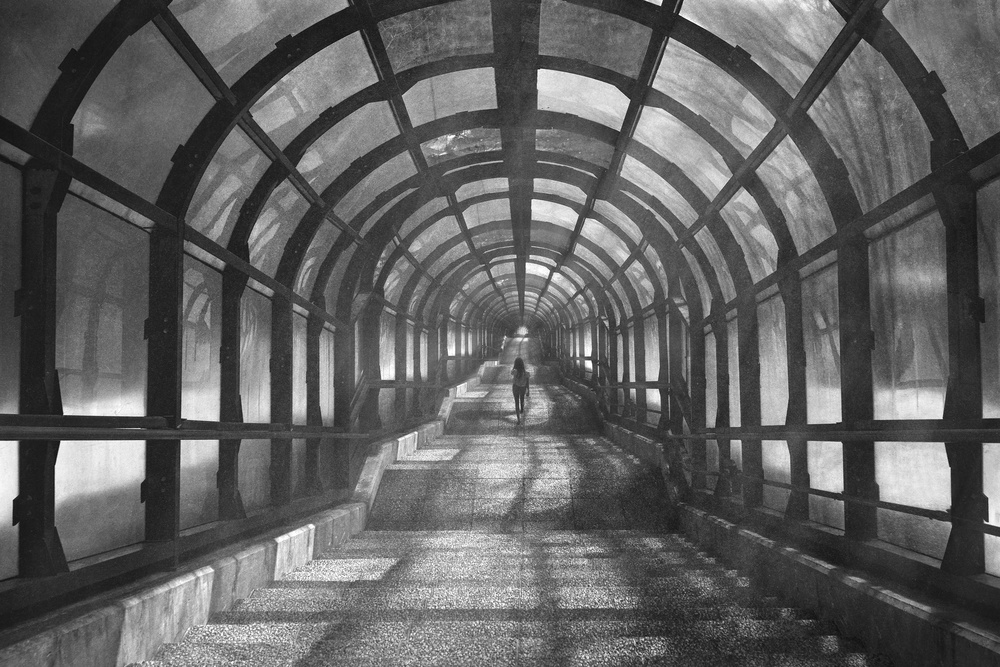Tips & Tricks

Striking 'Vanishing Point' Photographs
1x Blog-Tips & Tricksby Editor Miro Susta
Vanishing points and falling lines shape the effect of a picture on plasticity and dynamics. The image effect therefore depends strongly on the number and position of vanishing points.
What seems simple and logical at first glance is not quite so trivial at second glance.
The images in this article introduce readers to various examples of “Vanishing Point Photography” focusing on architectural, road & railway and nature photography.
Images of geometric, and of course non-geometric shapes, are subject to 2-point perspective in photography. However, only if the camera is perfectly aligned for the horizontal perspective.
Horizontal vanishing points are always at the level of the horizon line.
On architectural photographs, it is usually easy to identify alignment (vanishing points) lines.
In landscape photography, lines and surfaces can become the motif of the design element.

“Autumn Tunnel” by Pavel Uchorczak
The following images show a nearly symmetrical structure with the central perspective. The viewer's attention is directed to the centre of the image via the image diagonal lines (converging lines).
Finally some useful hints facts.
When alignment lines overlap, they form a vanishing point. Vanishing points can be present several times in the picture or outside.
For the majority of emphatically resting motives, the horizon should be approximately in the lower third row.
The linear perspective view has the following properties:
- Straight lines are currently displayed straight.
- Surfaces that are parallel to the film plane are rendered without distortion. For example, parallels lying in such an area (plane) are rendered in parallel, circles in these areas are round and angles in the same appear unchanged.
- Parallel lines that are not parallel to the film plane converge to vanishing points.
An average photograph has exactly 3 vanishing points. These can be used creatively for image design. The vanishing points are within or very often outside the picture. The ground plane should be parallel to the horizon line, otherwise the image will be crooked (curved).
Basic rule: Horizontal vanishing points are always at the height of the horizon line. These can be inside or outside the picture. Eye level is the distance between the ground surface and the height of the camera or our eyes.
The larger the angle between the alignment lines, the faster objects will appear to be smaller with increasing distance, the perspective becomes steeper.
At a small angle between the alignment lines we are talking about a flat (shallow) perspective.
As soon as you assume an oblique position with respect to an object, the object is displayed with two vanishing points. In general, objects with 2 vanishing points are made more vivid than with only one.
Once you no longer hold the camera horizontally, the last remaining dimension will show alignment lines, the image will have 3 vanishing points.
In pure nature shots, there are perspective lines of light and vanishing points, only these are more difficult to identify, because straight lines rarely occur.
Conclusion
In general, the vanishing points are not about the position of your camera, but about the objects related to your camera.
Each object introduces its own vanishing points, so it is easiest to place them all in rows so they share the same vanishing points.
If you prepare a single perspective grid and pass all the objects to the grid, you get a stiff artificial space; and you will lose control of the composition.
On the other hand, the more points you create, the more chaos and work for you.
Share your vanishing points photos in 1x-gallery.




















































